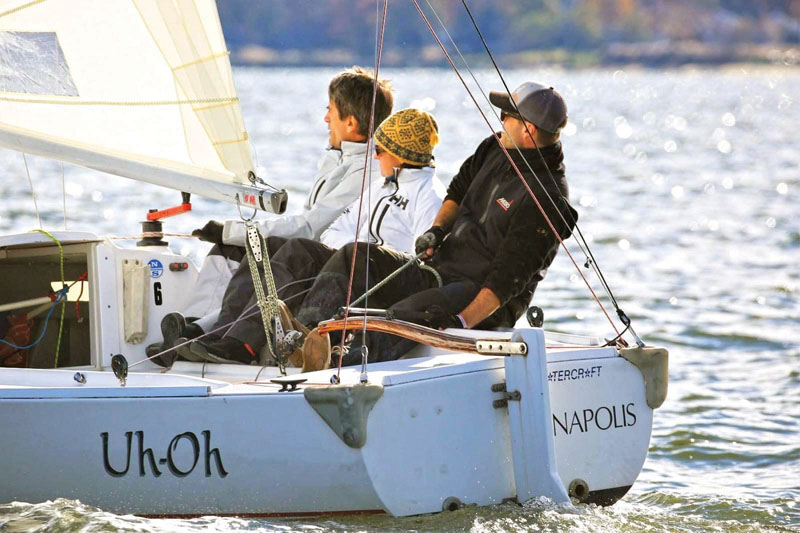Sailboat racing: manage what you can and navigate the rest.
On his Sailfaster podcast, Pete Boland recently featured Annapolis’s Guillaume Seynhaeve in a fascinating discussion about sailboat racing, maximizing boat speed, race starting strategy, and managing the complexity of keelboat racing. Hear the full episode on Apple Podcasts or watch it on YouTube.

How do you handle the complexity and intensity of a big fleet race?
Guillaume: Sailing is an extremely complex sport. I focus on controlling the basics—boat speed, positioning, and reading the shifts. I’ve seen teams obsess over details that ultimately distract from what really matters. Work on the fundamentals, and as you perfect those, you can refine the margins. The successful racers are the ones who can separate what is in their control from what is not. It’s about managing what you can and navigating the rest.
You’re renowned for your driving skills—how would you describe your approach to helming?
I sail significantly by feel. You can’t see the wind; you can only sense it and how the boat reacts to it. Instruments have their place, but over-relying on them can create bad habits. A good helmsman understands the subtleties: when to anticipate a puff, how to let the boat glide, and when to let the keel and rudder work for you. Sailing is about responding to the environment instinctively, not waiting for instruments to confirm what you should already know.
What’s your preferred starting strategy in a large competitive fleet?
My philosophy has evolved over the years. Once I would have said you have to win the start to win the race. But now I think differently. Winning the start isn’t necessarily about being first boat across the line—it’s about setting yourself up to be in a position where you can sail your own race. That’s my definition of a good start. Are you at speed? Do you have the ability to tack or continue in a clean lane? If you have those, you’re good.
If five boats are fighting for the pin, that’s a high-risk situation. Only one will come out ahead. I’ve learned to position close to the favored spot but not necessarily in the thick of it. I’d rather be the second- or third-best starter with speed and a clear lane than risk everything for the perfect start and end up stuck.
Speed is king. If you’re at speed and everyone else is fighting for position, you can roll a boat or extend enough to hit the first shift cleanly. I always think about having an exit strategy: tacking out, going bow down for speed, or staying the course. Ultimately, the ability to adapt and execute your plan is what’s key. It’s not about where you start but how well you start.
Tacking is a key focus for you—what’s your approach to it?
I focus on the jib. It gives me a reference point for my entry and exit. In light air, you might back the jib, but it still tells me when I’m past head-to-wind. It tells me when I’m supposed to be slower in my exit. In heavy air, the jib release is when I know I’m entering that head-to-wind point of sail. I do get frustrated when a jib trimmer leaves the rail and releases the jib too early, disrupting my timing and reference point.
The rate of turn should be consistent every time. If not, your jib trimmer will struggle to anticipate the speed of rotation. Don’t alter your approach due to nearby competitors. For example, if I’m lee-bowing someone, I’ll say ‘tack’ with intensity to time it right, but that doesn’t mean you should change the rate of turn. If you do, everything can go wrong; you might oversteer, slow the boat too much, or lose control entirely. It’s a balance between feeling the boat, using visual references, and working in sync with the crew. And of course, sometimes tacks won’t be perfect, but good enough is often good enough!
Subscribe to Sailfaster, the number one podcast for racing sailors.




